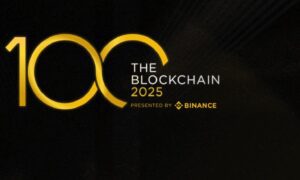Remote staffing, at present, is a capability decision and not just a cost decision. The learning, working and scaling of outsourced teams is changing, thanks to AI, and the economics of talent across continents is getting rewritten.
Remote Work Silently Re-invented
On a weekday morning in Manila in Philippines, support agents at Telus International start their shifts the way they always have, but the work feels different now. A digital assistant sits on every screen, suggesting faster replies, pulling up account histories and translating short notes into full solutions. It does not replace their work. It clears the noise around it.
Within months of the rollout, internal analytics told the story of the change. Average handling time had fallen sharply while agents who once managed four customer queries an hour were now managing seven. Customer satisfaction rose by nearly 20 percent. Telus executives later said the improvement came not from new staffing pools, but from a new relationship between people and the software helping them.
It is a modest example, but an important one. Remote staffing once meant shifting work where labor was cheaper. Today it is a competition to find teams who can work faster, think smarter and adapt sooner. The common fear is that AI threatens jobs. The reality inside the world’s outsourcing hubs is that AI is rewriting the job, not removing the worker. This shift is happening faster than anyone expected. The outsourcing industry grew for decades because companies wanted to pay less for labor. Automation has changed the reason entirely. Which leads to the next shift.
When the Cost Formula Stopped Working
For twenty years, the math was simple. A back-office role that costs approx. US $85,000 in Chicago could cost around US $25,000 in Cebu. It was a win-win situation for all as firms saved, and business owners smiled as the model delivered on what it promised – plenty of cost savings.
But savings have a limit. The McKinsey 2024 report suggested that over 60 per cent of outsourcing enterprises now depend on technology-enabled workflows. In other words, smarter hands have taken it over from cheaper hands. AI takes over the repetitive work and makes fewer mistakes, leaving humans to handle the nuanced work as AI-humans co-working became the new norm of outsourcing.
Accenture has invested US $3 billion into upskilling its 700,000 employees to work alongside generative tools, calling AI “the colleague that never sleeps.” Deloitte’s 2025 Global Sourcing Survey found that 71 percent of outsourcing decisions are now driven by the need to access new skills and speed, not lower salaries. The core economics have flipped now as time to impact matters more than cost per hour. What used to be a race to the bottom is now a race to capability scale.
How AI Changed the Texture of Daily Work
To see how this looks inside the workplace, we move closer to the ground. Inside modern outsourcing offices, the workbench has transformed. Legal analysts feed contracts into document engines that highlight anomalies before lawyers review them. Product teams run A/B tests on AI-generated variants and ship updates in days, not quarters. Recruiters use models that evaluate skill graphs instead of scanning keywords on CVs.
At remote staffing firms in India like Virtual Employee, remote resources operate as an extension of the client’s own structure. The clients have complete control over the project management, but VE handles the talent, continuity, and the AI-facilitated infrastructure that maintains predictable delivery. Live dashboards indicate task status, workload patterns, and quality indicators in real time, meaning that managers remain not blinded by the fact that the work is taking place elsewhere. It turns remote staffing into a capability layer instead of a risk. What was once manual oversight has become shared visibility.
Remote staffing used to feel distant. Teams worked thousands of miles away and feedback travelled through layers of delay. With AI guiding the workflows, the relationship feels closer. Managers see progress in real time as team members get instant suggestions that help them move faster and solve more complex problems.
Harvard Business Review studied service centers using AI copilots and found a 14 percent rise in productivity, with the biggest gains among younger workers who suddenly had the confidence to perform at a higher level. The result has been impressive as the baseline improves everyone, and the space for human judgment and creativity grows. In countries where remote staffing supports millions of businesses and families, this shift matters.
The Human Upside of Machine Learning
In the Philippines, the IT-BPM sector, with an employee count of around 1.7 million, constitutes almost 8 percent of the national GDP. For years, leaders feared that automation might hollow out the sector. That view has changed as the industry now expects AI to create more than 300,000 skilled roles by 2028, according to its government roadmap. The shift is visible on office floors with fewer data entry desks and more analysts and workflow designers being employed.
India’s NASSCOM reported a 15 to 20 percent productivity jump in tech services tied directly to AI-assisted development and debugging tools. Junior programmers who once took months to be put on clients can now contribute immediately, while onshore clients who once doubted offshore innovation are rethinking the stereotype. There is a quiet dignity in this transformation. Automation is not extracting value from workers. It is amplifying it and the geography of opportunity is widening.
Remote Talent – The Africa Story
Ten years ago, Africa barely featured in global outsourcing conversations. That has changed. Nigeria and Kenya now host AI training partnerships with Google and Microsoft. Andela, once known for placing software engineers remotely, has expanded into AI skills and product teams serving clients in the United States and Europe.
Gartner estimates that sub-Saharan Africa could provide more than 10 percent of the world’s remote digital workforce by 2030 if current training momentum continues. The belief that innovation belongs only to a few cities is becoming outdated. Capability is taking hold in places that once struggled to be heard in the global economy. Remote staffing began as a way to cut costs. The access has widened due to AI. Borders no longer limit talent; however, new vulnerabilities have appeared in the wake of technological advancement that connects people worldwide.
Building Systems That are Unbreakable, yet Flexible
Automation has pushed remote work into a new rhythm. Tasks move faster, decisions happen sooner, and clients expect progress to be continuous rather than scheduled. That speed is valuable, but it also creates a new kind of pressure. When everything is connected, a small issue in one location can quietly ripple across the entire workflow.
The Capita cyber incident in 2023 showed how this can play out in real life. A security breach affected parts of the UK’s public services, and teams who relied on Capita suddenly had no way to operate. It reminded leaders everywhere that remote staffing models are now part of national infrastructure. If the system pauses, the consequences are felt outside the office walls.
So, the focus has shifted. Remote partners are not just evaluated on skills or pricing anymore. They are evaluated on how they respond when things deviate from the plan. This is how follow-the-sun delivery became standard practice. Work moves from one region to another as time zones change, which means progress is always possible and delays are less likely to grow into problems.
Artificial intelligence is quietly strengthening this model. It tracks handovers between teams in different countries, watches workload patterns in real time, and steps in with a correction before a disruption becomes visible to the client. Continuity becomes proactive instead of reactive. Remote staffing firms like Virtual Employee have adopted this thinking in a practical way. Its delivery centers in Noida and Kolkata support each other, so client work does not depend on a single city or network. If there is a local challenge, teams can reassign responsibilities quickly without needing to reset expectations. The client sees consistency, even when there are complications behind the scenes.
This is how remote staffing has evolved. It is no longer simply a lower-cost alternative. It has become a reliable part of how companies design operations, manage uncertainty, and maintain their promises to customers.
2030: The Networked Intelligent Workforce
Once upon a time, humans and machines were considered competitors, as if only one could win. What is actually happening inside remote staffing is far more collaborative. Work now moves through connected systems that understand who is available, who has the right skills and where each task fits next. It is more about coordination without replacement.
Gartner predicts that, as of 2030, over 70 percent of business workflows will have combined human and AI decision support. In real-life terms, that translates to project plans that change automatically when priorities change, service commitments that respond to current conditions in real time and training software that reacts to the way each individual learns on the job.
This is already evident in everyday operations. A product manager in Manchester, UK can hand off a feature update to a designer in Nairobi, Kenya while a build assistant in Bangalore, India drafts implementation notes before the manager wakes up again. The work does not pause because one office closes for the night. It simply changes hands and keeps moving.
Remote staffing becomes less about distributing tasks and more about guiding intelligence across distance. Teams stay connected to the same context even when they are oceans apart. The workflow does not care where people are sitting. It cares that the right person is handling the right step at the right moment. And that shift raises an important question about what work looks like when distance no longer slows anyone down.
What the New Era of Work Really Means
Every major shift in technology reshapes what we expect from work. The industrial age turned work into physical output. Outsourcing turned it into repeatable processes across time zones. Now artificial intelligence is shifting the focus again. The most valuable contribution to a modern workforce is judgment. People are no longer hired to perform steps. They are hired to decide which steps matter.
That is where remote staffing continues to evolve. AI can provide a fast answer or summarize information, but it cannot understand a customer’s tone, recognize cultural nuance or sense when something is not quite right yet. These are human instincts built from context and experience. When that judgment is paired with systems that handle the routine, the overall outcome improves.
Remote staffing used to be described as work being relocated. Today it is closer to knowledge being connected. Skills that once had value only inside a physical office can now be applied from anywhere. When capability moves freely, geography stops acting as a limit. Human contribution grows when supported by the right tools. AI has simply given that growth a stable foundation.
Conclusion: Where Remote Staffing Goes from Here
Remote staffing has progressed far beyond its cost-saving origins. It is becoming a core operating strategy. The organizations that will stay competitive throughout the next decade are the ones that design their teams so that automation handles repetition, and people focus on decisions that matter. Distributed teams learn faster when information flows clearly, and systems adapt in real time.
This is not about replacing human roles. It is about strengthening them. AI ensures certainty while people ensure relevance. Together, they build the conditions for work to flow continuously across borders without being lost in terms of context or quality. The outsourced future of work will not be determined by where talent resides, but by how effectively it is connected. The firms that understand this are already reconfiguring their workforce models.
Read More From Techbullion



































